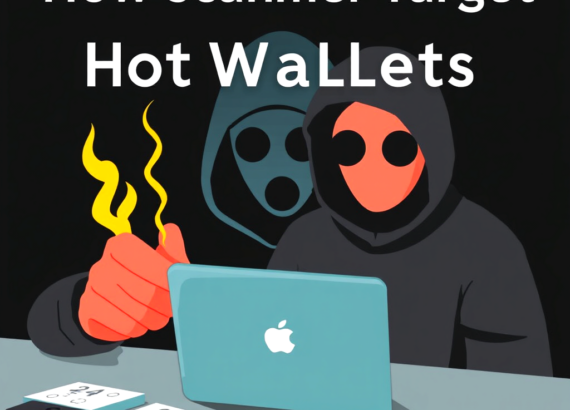
Hot wallets, connected to the internet via a browser or app, offer a convenient way to manage digital assets. However, their constant online presence makes them more exposed to cyberattacks than cold wallets, which only briefly connect to the internet when making transactions. This makes hot wallets frequent targets for cybercriminals looking to steal funds through deceptive methods.
Common Scam Tactics
Phishing Attacks
Phishing scams pose serious risks to hot wallets by mimicking legitimate sources like wallet providers, exchanges, or support representatives. Attackers often reach out through fake websites, emails, or social media messages, tricking users into revealing sensitive information like login credentials and private keys.
Social Engineering
This technique involves more direct, often real-time manipulation, such as calls, personal messages, or live chats. Scammers actively engage with users to build trust and extract information.
Fake Airdrops and Giveaways
Scammers promote fake airdrops or giveaways to entice users to grant wallet access or send a small fee for a promised larger reward. Instead, they pocket the money and disappear.
Man-In-The-Middle Attacks
Attackers on unsecured networks can intercept communication between users and wallet services, capturing private keys or altering transaction details, leading to unauthorized fund transfers.
Fake Wallet Apps
Cybercriminals create fake wallet apps that mimic popular ones using their names and logos. Users download them and enter credentials, which scammers then use to access the real wallet.
Malware Infections
Malware targeting hot wallets uses varied tactics with a clear goal: to steal sensitive data, redirect transactions, or demand payment. Examples include Cryware and AZORult, which capture private keys and wallet credentials.
Protecting Hot Wallets
To protect hot wallets from attacks, users must adopt essential security practices:
- Enable Two-Factor Authentication (2FA): Adds an extra layer of security by requiring a second verification form.
- Use Strong, Unique Passwords: Creates a barrier against password-guessing attacks.
- Verify Wallet Apps: Ensure only official wallet apps are downloaded to avoid counterfeit apps.
- Double-Check Wallet Addresses: Prevent clipboard hijacking by confirming addresses before transactions.
- Be Cautious with QR Codes: Scan only from trusted sources to avoid QRishing scams.
- Avoid Public Wi-Fi: Reduces the risk of man-in-the-middle attacks.
- Install Antivirus and Anti-Malware Software: Detects and blocks malware designed to capture sensitive data.
- Regularly Update All Software: Ensures the latest security patches are in place to defend against new threats.
- Monitor Browser Extensions: Use only verified browser extensions and uninstall any suspicious ones.
- Avoid Oversharing on Social Media: Reduces the risk of attracting targeted attacks.
Conclusion
Hot wallets offer a convenient solution for managing cryptocurrency assets, but their constant online presence exposes them to increased security risks. Scammers exploit this vulnerability through phishing, social engineering, fake apps, and sophisticated malware designed to capture sensitive data or control transactions to steal the user’s funds. Staying vigilant against these tactics is essential. Adopting security measures like 2FA, strong passwords, verified wallet apps, and avoiding public Wi-Fi when performing transactions can significantly reduce the attack risk. A few practical steps can make a crucial difference in securing hot wallets and avoiding costly mistakes.









